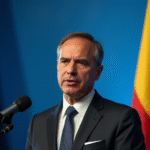Introduction
In the last decade, Mexico has witnessed a significant transformation in how high-net-worth entrepreneurs and families conceptualize wealth management. The combination of a global environment marked by uncertainty, the growing international mobility of heirs, and evolving tax and financial regulations has fueled a more sophisticated and transnational estate planning agenda.
Challenges in Cross-Border Inheritance Management
While Mexico enjoys favorable tax treatment for the transmission of inherited assets, the situation changes dramatically when interacting with other jurisdictions. In the United States and Europe, succession taxes and rules of access to financial accounts can lead to unexpected outcomes without proper pre-planning.
Today, the question is no longer simply about how to inherit but where and under which applicable law the inheritance will be managed, along with its tax implications. This complexity necessitates designing estate planning schemes that simultaneously integrate multiple jurisdictions, avoiding conflicts of laws and double taxation risks.
Asset diversification, once a recommendation, has become an imperative. However, its implementation presents a dilemma: the more dispersed the wealth becomes—across various financial platforms, real estate in different countries, and multinational operations within companies—the more challenging it is to administer and protect coherently.
The Need for Flexible Vehicles
To address these challenges, flexible vehicles that centralize the strategy without forcing asset concentration are required. For instance, a liquid trust can facilitate comprehensive account and investment portfolio management, even when assets remain in diverse financial institutions or jurisdictions.
Emerging Trends
1. Open Wealth Architecture
Flexibility is prioritized over rigidity, with structures capable of adapting to changes in family dynamics, regulations, or market conditions.
2. International Tax Transparency
The automatic exchange of information (CRS, FATCA) has established a new paradigm where opacity is no longer viable.
3. Institutionalization of Legacy
More families are integrating protocols, corporate governance bodies, and ordered succession rules into their trusts to ensure not only the preservation of wealth but also family cohesion.
4. Global Consolidation Systems
Wealth groups are beginning to adopt platforms and legal structures that unify dispersed assets across various jurisdictions into a single reference framework. This not only simplifies management and consolidated reporting but also provides strategic clarity to banks, tax authorities, and heirs.
5. Technological Innovation
The use of digital platforms for wealth management and the potential integration of blockchain as a fiduciary rights certifier will mark the next stage.
Mexico’s Inflection Point
Mexico is at a turning point. Families that recognize the global nature of estate planning and adopt open, transparent, and technically sound schemes will not only ensure the continuity of their wealth but also transform international uncertainty into a strategic opportunity.
In this new landscape, the true competitive advantage no longer lies solely in wealth generation but in the ability to preserve and transmit wealth beyond borders with an integrated, disciplined legal approach.
*Wealth Planner – Private Banking UHN BBVA Mexico
Key Questions and Answers
- What has changed in Mexico’s approach to wealth management? In the last decade, there has been a shift towards more sophisticated and transnational estate planning due to global uncertainty, international heir mobility, and evolving tax and financial regulations.
- What challenges arise when managing cross-border inheritances? Different jurisdictions, such as the US and Europe, have unique succession taxes and access rules to financial accounts that can lead to unexpected outcomes without proper pre-planning.
- Why is asset diversification crucial? Dispersed assets across various financial platforms, real estate in different countries, and multinational operations within companies require centralized management for coherent protection.
- What are the emerging trends in wealth management? Open wealth architecture, international tax transparency, institutionalization of legacy, global consolidation systems, and technological innovation are shaping the future of estate planning.
- What does Mexico’s current situation imply for wealth management? Recognizing the global nature of estate planning and adopting open, transparent, and technically sound schemes will ensure wealth continuity and transform international uncertainty into strategic opportunities.






